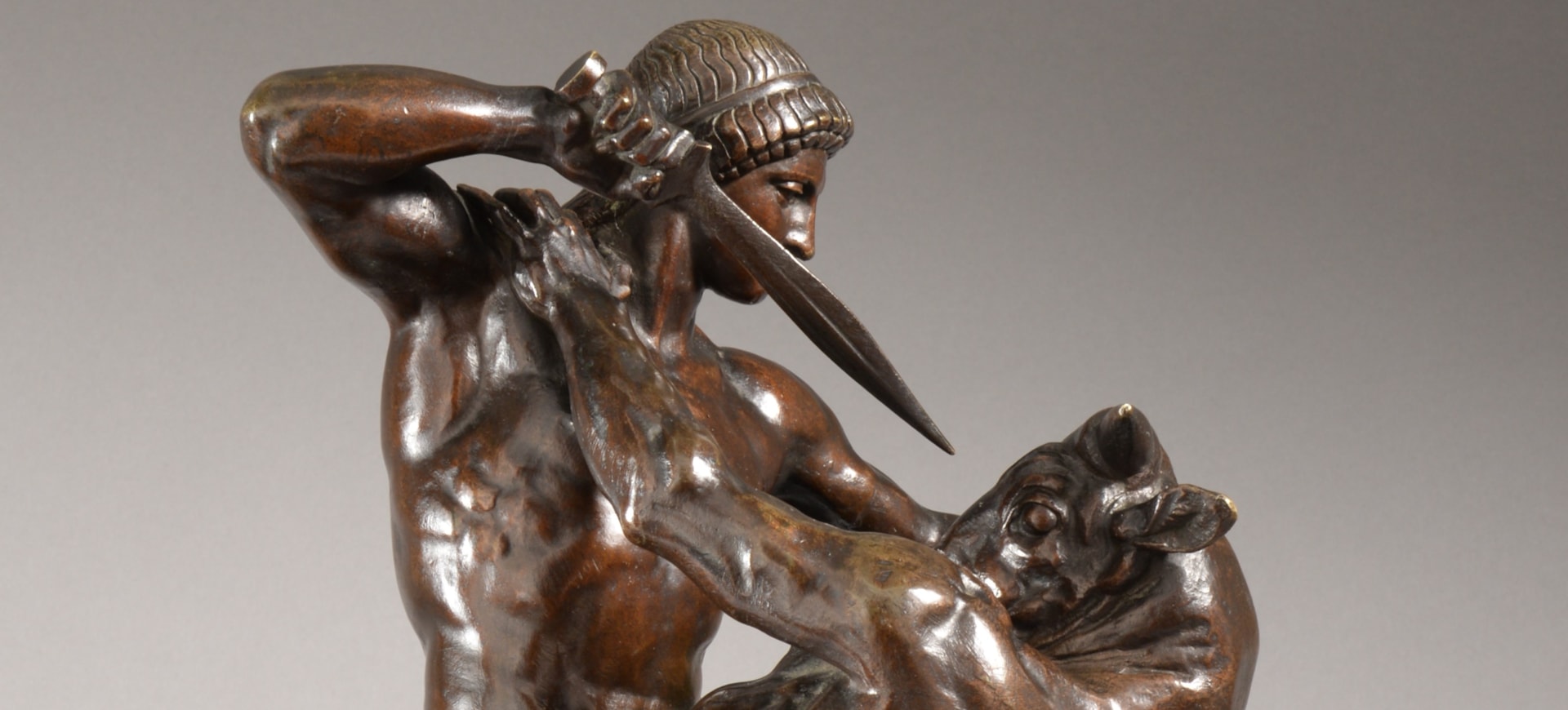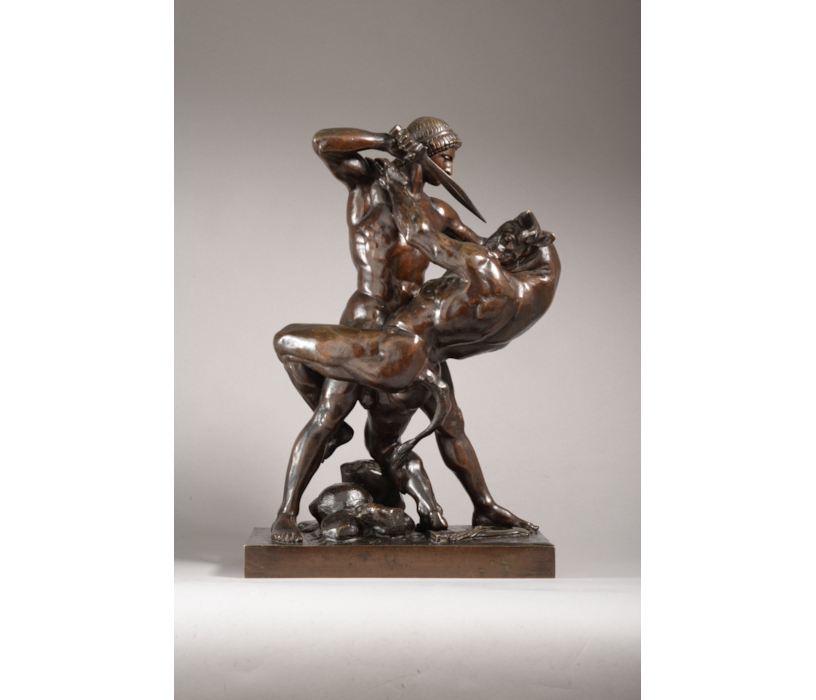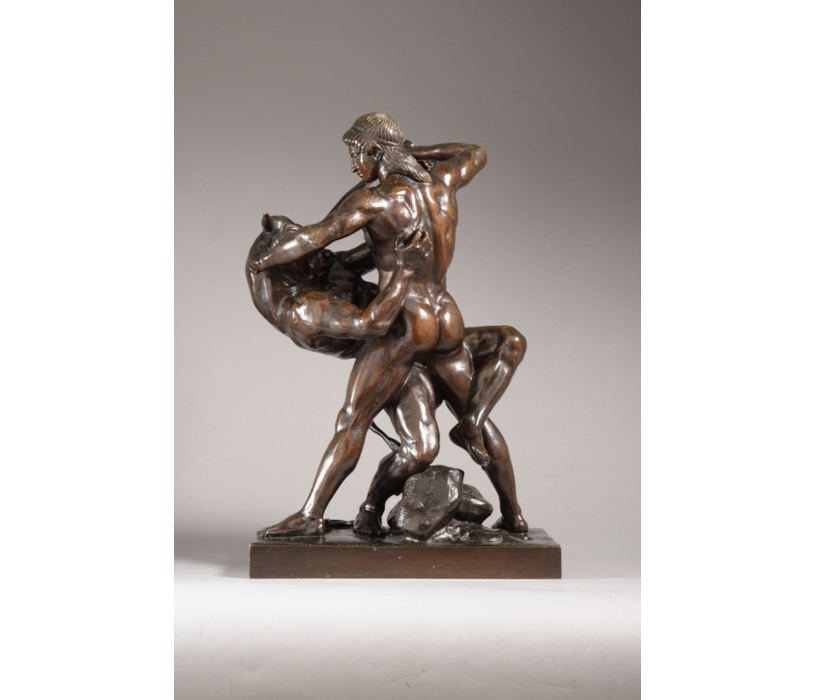
Antoine-Louis BARYE
( 1795 - 1875 )
THESEE COMBATTANT LE MINOTAURE (1843)
Bronze, rich brown patina
H : 45,2 cm, W : 25,8 cm, D : 16,5 cm
Artist cast and first edition (1838-1845) signed in the mould "Barye".
Circa 1843-1845
Provenance :
Barye Studio (...)
Georges Petit Gallery (...)
UDB Collection, Paris (...)
Charles Janoray Collection (...)
Princesse de Salm Collection (...)
Back to UDB Collection
Première version, refusée au Salon de 1843.
Bronze à patine brun clair richement nuancé.
Haut : 45,2 cm, Long : 25,8 cm, Prof : 16,5 cm
Épreuve ancienne signée « Barye » (dans le moule) atelier Barye, « belle épreuve » - rarissime.
Circa : 1843-1845
Detailed Description
Barye had to be proud of his mythological group, since in his application letter to the Fine Arts Academy, Thésée combattant the Minotaure appears in the «Collection of bronzes by Barye», and is one of the two models he highlights with Thésée combattant le centaure Biénor. Although this subject has been dealt with extensively by his confreres, it is undoubtedly Barye’s version that became iconic. Perhaps it could be explained by his great ability to make credible the difficult artistic representation of the mythological couple «monster-human being». Here – in an X-shaped composition – the intelligence of the game of legs obscures the monstrosity of the Minotaur and directs the attention to the upper part of the sculpture, where the action is concentrated, with the sword and the face to face that opposes Bestiality to Civilization. This is the first version, on a rectangular terrace, with unmasked nudities. In the second version, which dates perhaps from the late 1850s, the terrace was enriched with a profile and the nudities were attenuated under the pressure of the prude bourgeoisie of the time.
We think today that Barye exploited the two versions in concomitance, and this without real success, because of the few examples produced in comparison with his second mythological group, Thésée combattant le centaure Biénor. And, because of the signature coming from the mould and its cast characteristics, we place this example in the first period of artist casts so in 1843-1845. It is the Maison Barbedienne that really popularized the model, especially at the turn of the century, and only in the second version, of which it exists also an enlargement.
You may also like










